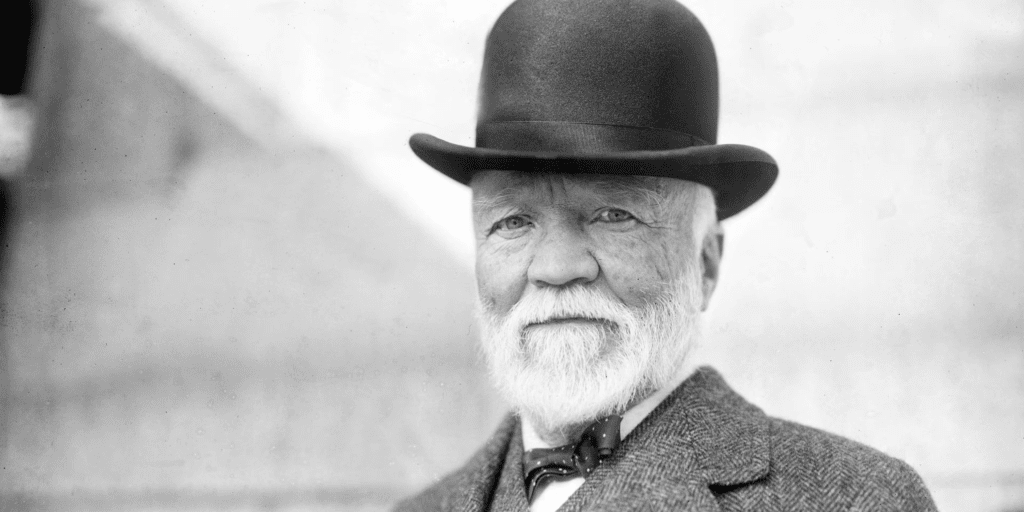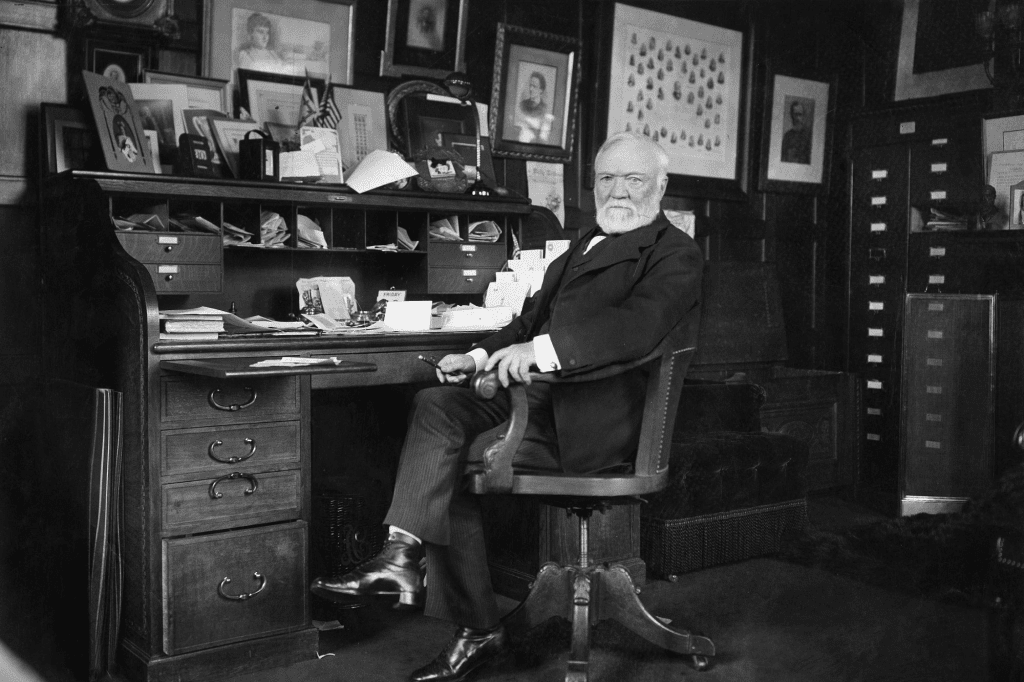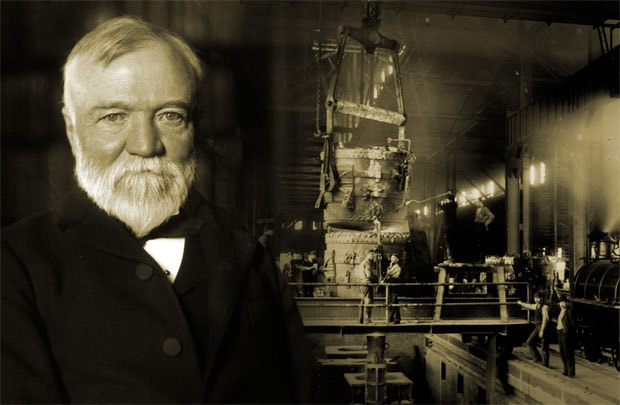When we talk about American success stories, few shine brighter than Andrew Carnegie. He rose from extreme poverty as a Scottish immigrant to become one of the richest men in the world during the Gilded Age. But Carnegie’s story isn’t just one of steel, railroads, and booming industry it’s also a tale of giving back in a way that still echoes through American towns and cities today.
Carnegie didn’t just make billions. He gave most of it away and he did it with purpose.

The Man Behind the Wealth
Born in 1835 in Dunfermline, Scotland, Andrew Carnegie immigrated to the United States with his family at the age of 13. Starting off as a bobbin boy in a cotton factory for just $1.20 a week, Carnegie climbed the social ladder through hard work, strategic investments, and eventually the steel industry. By the turn of the century, he had become a titan of industry and one of the richest individuals in American history.
But Carnegie believed in a radical idea: The man who dies rich, dies disgraced.
That belief formed the foundation of his life’s second act as a philanthropist.

A Vision for Education and Equality
Carnegie had a deep belief in the power of knowledge. He credited his own rise to access to books, especially those at a small library a local benefactor made available to working boys like him. So, once he had the means, he decided to build libraries across the country places where anyone, regardless of income, could walk in and expand their mind.
Video:
How Andrew Carnegie Became The Richest Man In The World
But there was a catch.
Carnegie would donate the money to build the library, but the community had to commit to maintaining it. That meant the town or city had to provide the land, staff the library, stock it with books, and keep it open to the public forever.
It wasn’t charity for charity’s sake. It was an investment in a community’s sense of ownership and responsibility.
Thousands of Libraries, One Legacy
Between 1883 and 1929, Carnegie funded the construction of 2,509 libraries worldwide, including 1,679 in the United States. From small rural towns to growing urban neighborhoods, these buildings became centers of learning, literacy, and community gathering.
Many of these original Carnegie libraries still stand today. Some are still functioning as public libraries. Others have been transformed into museums, art centers, or community halls but their presence reminds us of a time when access to knowledge was considered a civic right, not a privilege.

More Than Brick and Mortar
What makes Carnegie’s legacy powerful isn’t just the number of buildings or the dollars he gave it’s the philosophy behind it. He believed that wealth should be used to lift others, and that true success came from enabling opportunity.
Video:
Andrew Carnegie: Robber Baron or America’s Greatest Philanthropist?
He didn’t wait until governments took charge of public education or libraries. He took action and expected communities to meet him halfway. That model of philanthropy generous but empowering was ahead of its time and still shapes how many philanthropists operate today.
A Living Legacy
In an age where billionaires often hold on to their fortunes or donate with strings attached, Carnegie’s model feels both classic and radical. He didn’t just write checks he built institutions. He didn’t just give he challenged others to commit.
Today, if you walk into a quiet reading room in a town you’ve never heard of, there’s a good chance you’re stepping into a piece of history a Carnegie Library built more than a century ago, still serving the public, still fulfilling the dream of a boy who believed books could change lives.



